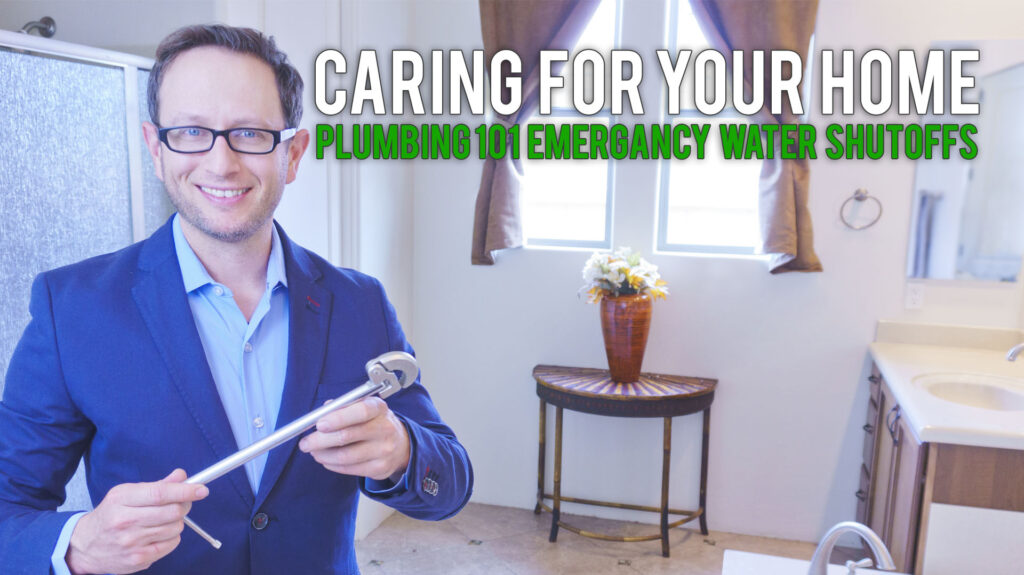
Bookmark this page now! You are definitely going to need it.
Can you name the tool I’m holding? I carry one of these when I preview homes with clients.
I have witnessed tens of thousands of dollars in water damage over my career. All of it could have been prevented by simply knowing how to turn off the water.
The tool is a plumber’s wrench. Despite I’m in sales, a little knowledge and few tools like this goes a long ways. It helps grip tricky to reach or even stuck shut off vales so plumbing can be depressurized until repairs are completed.
Click for video on how to turn off your water
Probably the easiest way to turn off your water is to stop paying the bill. All joking aside your primary shutoff is at your utility meter, assuming you are on public water. This discussion will not get into private wells as there are too many types of well systems to cover in this tutorial.
Know where your meter is located
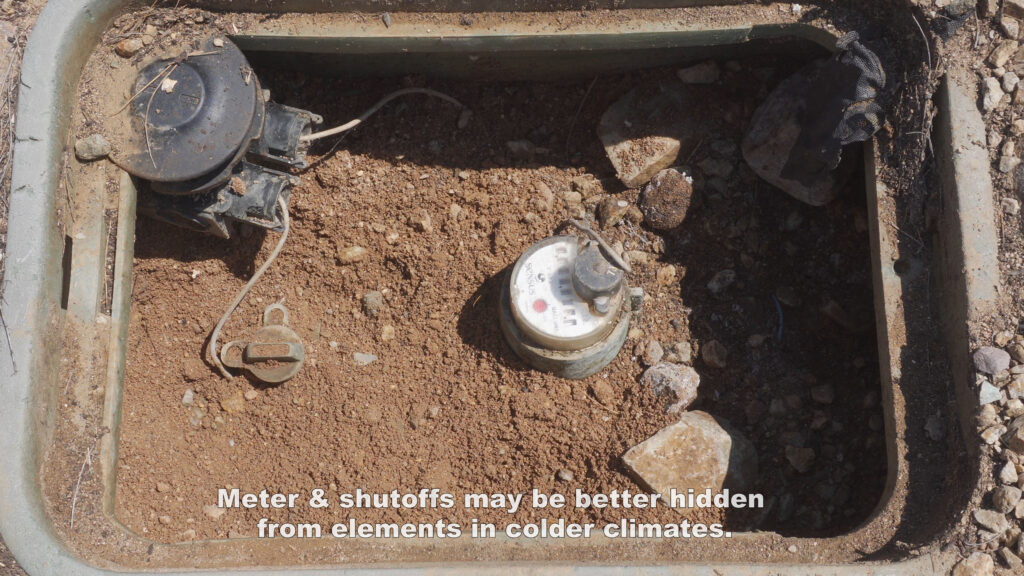
Never mess with the utility company’s shutoff by the meter (street side valve). If you break it you pay for it plus there is no way to turn off water if the utility valve breaks.
I’ve seen some pretty weird stuff in my career, like properties with multiple water supplies but that’s certainly the exception.
You can turn off the property valve, after the water meter, if you have an issue with your water main. It will depressurize your entire property, unless you have multiple water sources.
You can also use the meter to troubleshoot leaks and should periodically double check your bill against the meter.
Know where your structure Shutoff is located
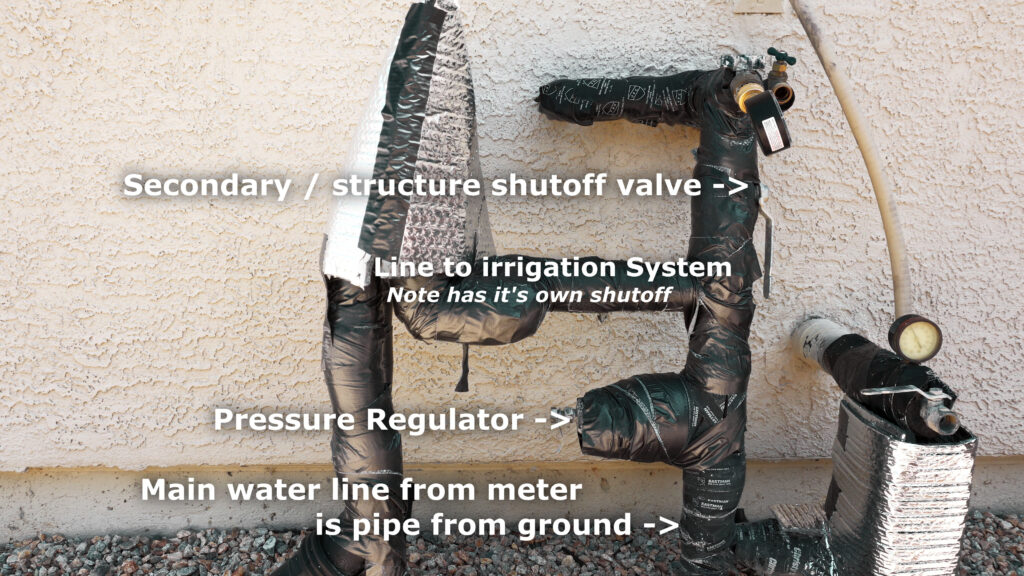
Each structure, typically only one – your house, should have a shutoff. This valve is on the main line, from water meter, into the structure
I live in a warmer climate so the shutoff is on the exterior of my house. They will be better protected from elements in colder climates. The shutoff should be at the shortest point from the meter to the structure, as builders like to save costs by making main line as short as possible.
Use this shutoff to depressurize your house if you plan to vacate for a while or need to repair a leak.
Fixture supply valves
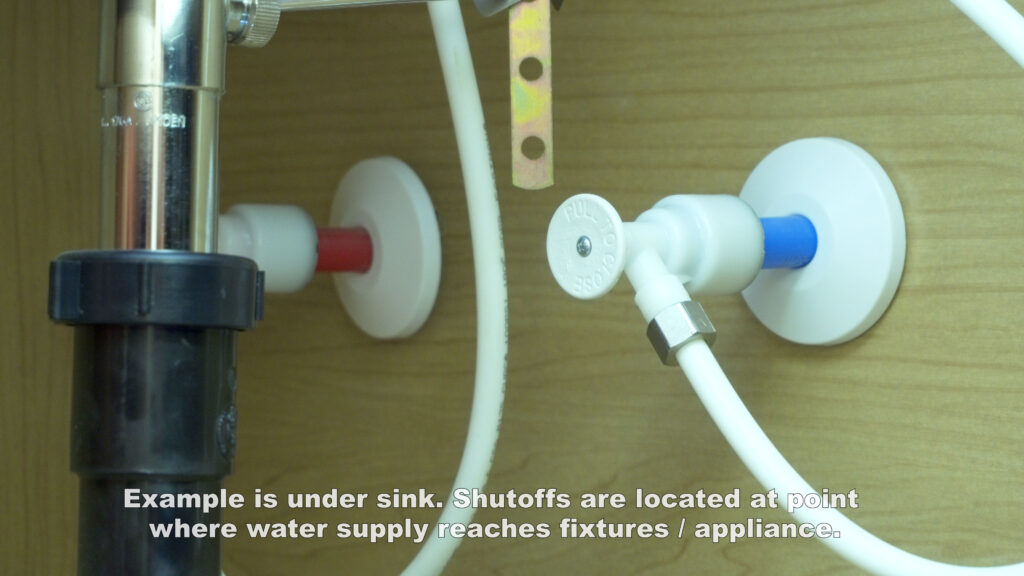
Each appliance has a shutoff valve in the house, this includes all plumbing fixtures, washers, hot water tank, refrigerator ice maker, pool pumps, etc. Additionally, there’s one for cold (tap) and hot water if the appliance uses it.
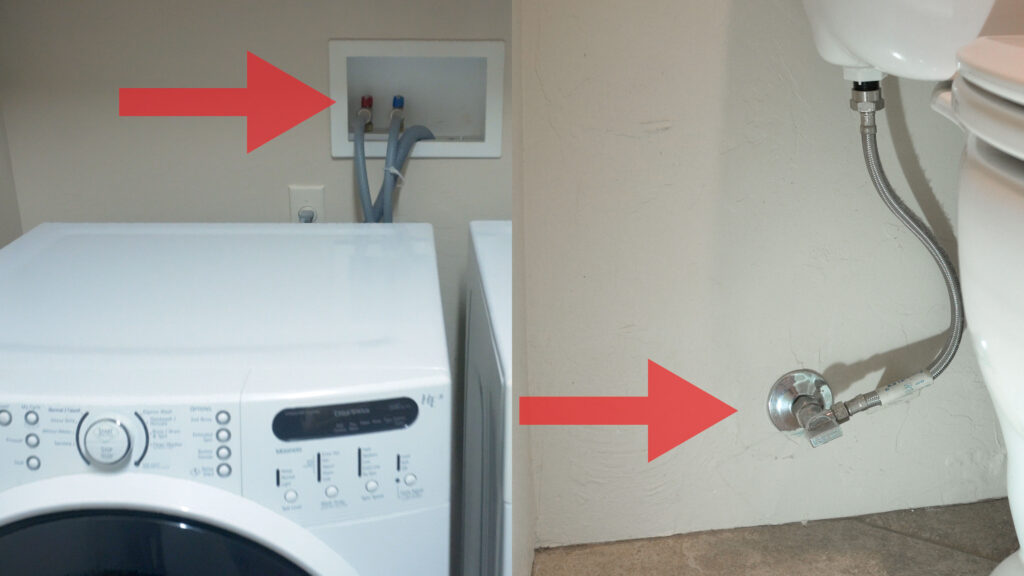
Pay close attention to the toilet feed and cloths washer supply lines. I listed two properties where the owners didn’t care for these systems.
The cloths washer on one property and toilet line on the other leaked at the fitting for the hose. They flooded the homes and caused over $30,000 in damage.
Each instance only needed a new $10 line (or $0.10 rubber washer) and could have been avoided if water was depressurized as I had advised the clients.
How to find Plumbing Leaks
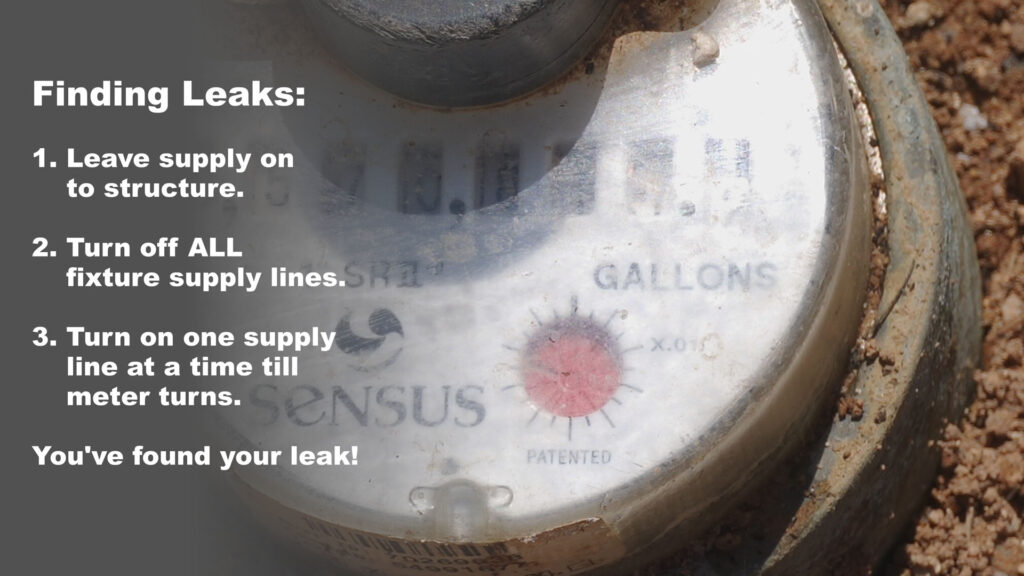
Shutoff valves are helpful in troubleshooting leaky appliances. You can turn them all off and observe the water meter as pressurize one line at a time.
The meter will turn when the faulty system is pressurized. This little tip has saved my clients and myself thousands of dollars in wasted water.
The most common culprits are toilet floats, reverse osmosis water systems, pool floats, evaporative cooler floats, and TPR valves on hot water tanks. When they stick, water goes straight down the drain, every day, all day long. This results in a very expensive water bill.
Landscape irrigation systems are also notorious. This is a topic unto itself. I advise most of my clients to eliminate irrigation systems all together if possible.

I am one of only a few Real Estate Brokers in the country who has a decade of experience in engineering and another decade as a full time real estate agent.
There’s nothing more rewarding then sharing my expertise with you. Simple little tips like this ensure my clients have the best experience ever in the real estate market.
My results speaks for themselves as my clients earn up to 150% more than their neighbors’ properties and you can too. Drop me a line when you start thinking about that moving truck and I’ll help you every step of the way.